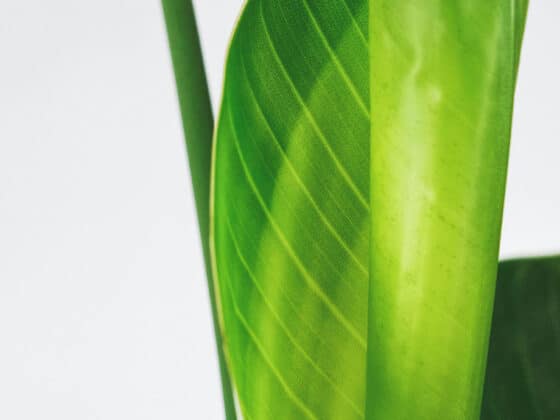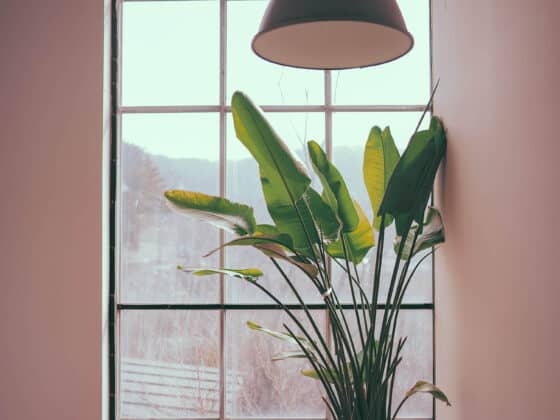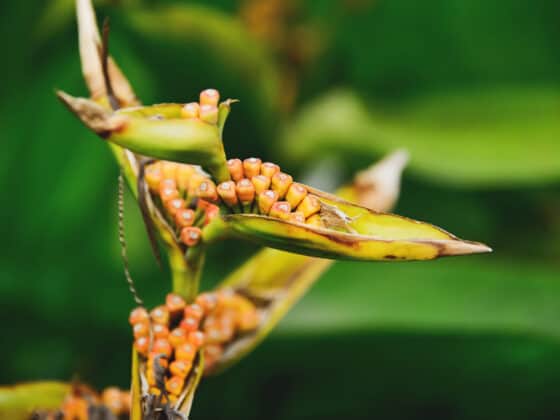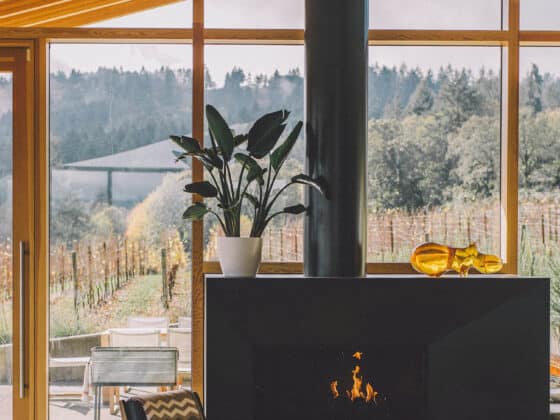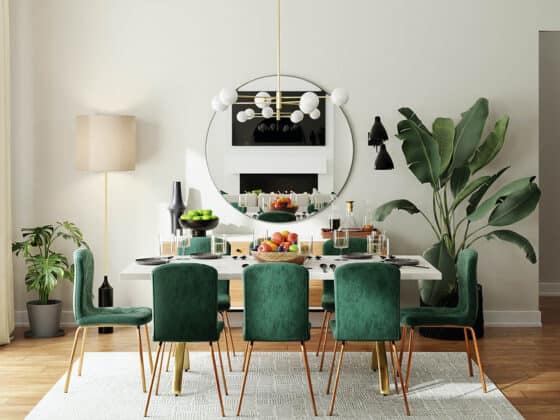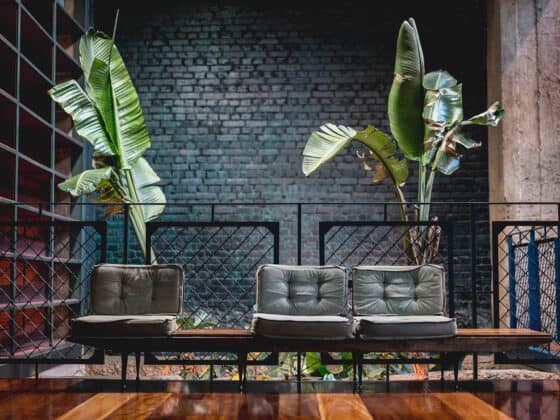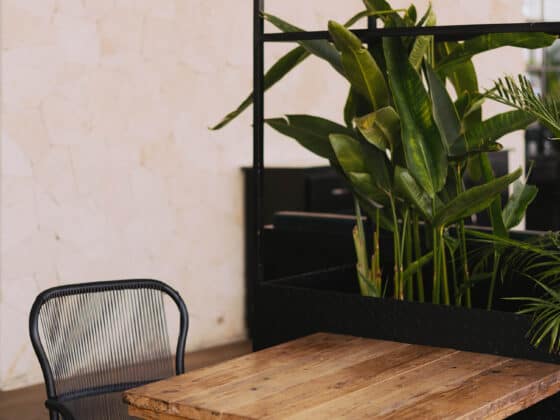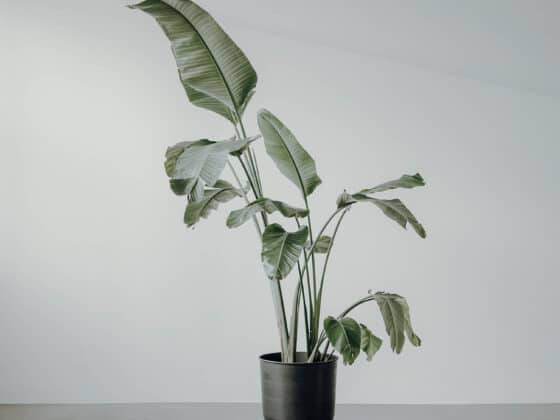The Bird of Paradise is prized for its large, colorful foliage. But much of its striking appearance depends on a proper balance of water and humidity. Conversely, improper watering habits can rob your Bird of Paradise of its beautiful appearance, resulting in yellowing, limpness, and even death.
So, how much water does a Bird of Paradise houseplant need? You should water your indoor Bird of Paradise when the top one to two inches of soil have dried out. Check this by poking your finger down into the soil to feel for moisture. If the soil is dry, water thoroughly. If not, wait a few days and check again.
Both underwatering and overwatering can take a toll on the health of your plant, and humidity can play an overlooked role in sustaining your Bird of Paradise. This guide will help you learn all you need to know to keep your plant healthy and hydrated!
How Often Should You Water Your Bird of Paradise?
Your plant’s water needs will vary depending on the growing season, location, humidity, exposure to light, and other environmental factors. All of these factors are prone to change, and so will the frequency with which you water your plant.
Instead of watering on a set schedule, check the soil before adding more water. You should water your Bird of Paradise when the top two inches of soil are dry.
Make a habit of poking your finger down into your plant’s soil and feeling for moisture every few days. If the top two inches of soil are dry, add more water. If not, wait a few more days and check again.
If you want extra precision, you can use a
Beware The Dangers of Overwatering
Contrary to popular opinion, the most common way we kill our houseplants is by giving them too much water, not too little. Turns out, you can definitely have too much of a good thing.
Even though your Bird of Paradise roots are underground, they still need to breathe and take in oxygen along with water and nutrients. And when the soil they’re planted in becomes heavy and water-logged, the roots, quite literally, drown. Now they cannot take in the oxygen or water your plant needs to survive. Which means they won’t be able to send nutrients and water to the foliage and flowers of your Bird of Paradise.
Worse, a Bird of Paradise that sits in saturated soil for too long can be afflicted by root rot. The dark, wet conditions of overwatered soil allow bacteria and fungi to breed rapidly, and they can quickly colonize the plant’s roots.
Unfortunately, root rot is not always quick to diagnose, as most damage is happening under the surface. If you notice your plant foliage turning yellow or brown or a musty, foul smell coming from the soil, slip the plant from its container and take a quick look at the roots.
Healthy roots are white and crisp. Roots harmed by overwatering and root rot are brown, grey, or black and slimy or mushy. If you notice any unhealthy roots, use shears to prune them away, sterilizing between each cut so as not to transfer the infection to healthy portions of the plant, before repotting in a new pot with new potting soil.
While too much water can cause severe problems for a Bird of Paradise, it’s not the only thing you have to worry about when it comes to watering. Swinging too far in the opposite problem can pose other threats to your houseplant.
Underwatering Can Also Cause Issues
Though, as previously mentioned, overwatering is a more common reason for plant sickness than underwatering, forgetting to water your Bird of Paradise will certainly impact the health and beauty of your plant.
Bird of Paradise is native to South Africa and thrives in hot, humid locations.
Typically, the best growing conditions for an indoor plant are ones that mirror its original environment. With this in mind, a tropical plant will not thrive in a dry container. Failure to provide enough water can result in wilted Bird of Paradise blooms, limpness, wrinkled/discolored leaves, and eventually the death of your plant.
But if overwatering and underwatering can harm your Bird of Paradise, how do you know if you are watering your plant correctly?
The Best Way to Water Your Bird of Paradise
Stop counting days between watering sessions. Instead of trying to water your plant on a set schedule, make a point of testing your Bird of Paradise’s soil frequently. Insert a finger or moisture meter into your plant’s soil and feel for moisture. If the soil is dry 1-2″ down, it is time to water.
Also, make sure to water your plant until liquid seeps from the bottom of the container. Ideally, about 20% of the water you poured into the pot should run out through the drainage hole in the bottom of the container. This may seem like overwatering, but thorough waterings are important for a couple of reasons.
First, a thorough watering allows the soil to fully absorb the moisture. Superficial soil saturation will not fully hydrate the root system and can lead to dehydration.
Second, a thorough watering makes sure that your Bird of Paradise container has unblocked drainage holes. If it seems like you have added enough water for it to seep from the pot, but no liquid appears, you may want to establish that the drainage holes have not become clogged with dirt or debris.
But what if your Bird of Paradise container doesn’t have drainage holes?
Does Bird of Paradise Need Drainage?
It’s not uncommon to find ornamental planters that do not have drainage holes. However, as pretty as these pots may be, they can be harmful to the health of your Bird of Paradise. Without at least one drainage hole, overwatering is almost unavoidable. A Bird of Paradise needs a pot with a drainage hole.
However, if you do fall in love with a pot without a drainage hole, you have options. You can either drill a hole in the pot yourself or use it as a cachepot. With the cachepot method, first, place your Bird of Paradise in a lightweight nursery pot with ample drainage. Then that pot can be nested down into the decorative container or cachepot.
Keep in mind that this approach can have a hidden danger as standing water can accumulate in the cachepot and still result in soggy soil. If you use this method, always dump the excess water from your cachepot after watering, or remove the nursery pot when watering and let it drain completely before placing it back in the cachepot.
If you choose a container that has a saucer, make sure that the saucer does not block the drainage holes. If there is no built-in way to elevate the plant above the saucer, consider using pebbles or rocks to elevate the plant above the saucer, so that water can flow easily from the bottom of the pot.
When repotting your Bird of Paradise, avoid excessively large containers. Though it might seem that choosing a large planter will give your Bird plenty of room to grow, it actually slows down the time it takes to dry out your container after watering and can cause overwatering issues.
Lastly, it is wise to check the drainage holes of your Bird of Paradise container to make certain they remain unblocked, as soil, pebbles, and other debris can clog the holes. This will protect your plant from accidental overwatering.
What Water is Best for Your Indoor Bird of Paradise?
Most Bird of Paradise owners water their plants with tap water without experiencing any issues. In fact, if you would drink the tap water yourself, it is probably fine for your plant. However, if you have very hard or soft water, or if you have concerns about water quality, there are other techniques you can use to water your plant.
Distilled or filtered water usually has reduced amounts of chemicals, like chlorine, and lower mineral content. This is important because compounds like calcium can build up in your plant’s soil, altering pH balance and affecting nutrient absorption. Even soft water, which many people believe to be better for plants, can be high in sodium, which is not ideal for plants in the long term.
While distilled or filtered water can help address these issues, it can be expensive. Additionally, water with additives for taste or enhanced hydration may cause the same issues of mineral buildup.
Rainwater provides an alternative to both tap water and filtered water, and studies show that it is rich in nitrogen and oxygen. (More on watering your plants with rainwater here!) Rainwater is also typically slightly acidic, which helps release nutrients held in the soil. Best of all – it’s free!
Does a Bird of Paradise Need Humidity? How Much?
Remember what I said about mimicking a plant’s natural habitat for the best indoor success? In the wild, a Bird of Paradise is surrounded by lots and lots of hot, humid air.
Birds of Paradise like humidity levels of at least 50%, but the higher the humidity, the better for these tropical plants. In fact, if you can keep the humidity around your plant between 60% and 70%, your Bird of Paradise will likely reward you with beautiful, glossy leaves.
To check the humidity levels surrounding your houseplant, make a small investment in a hygrometer. These little devices measure the humidity levels in the air and display them on a screen, similar to a thermostat. Use your hygrometer to find the most humid rooms in your home (commonly kitchens and bathrooms) and place your Bird of Paradise nearby.
If you decide that your Bird of Paradise needs a bit more humidity in its space, there are some strategies you can consider to improve the moisture in your air quickly and affordably.
Mist:
Should you mist a Bird of Paradise? Misting is a widely debated topic in the houseplant world. Some people swear by this practice, while others argue that the small amount of mist in the air does relatively nothing to increase humidity for your plant.
At The Healthy Houseplant, we generally believe that misting is not the most effective way of increasing humidity levels, but it doesn’t seem to hurt plants either. As long as you use a fine mist setting, and spray your plants in the morning, we believe misting can be perfectly healthy for houseplants, plus it can help to deter pesky critters like spider mites that thrive in dry areas.
Group Plants Together:
Another method for raising humidity around your Bird of Paradise is to group it together with other humidity-loving plants. Plants naturally release water into the air through a process called transpiration. The more houseplants transpiring together, the higher the humidity in that location. Just be sure not to put them right on top of each other; airflow is good for healthy houseplants.
Add a Humidifier:
While not the cheapest, the most tried and true method for raising humidity around your Bird of Paradise is introducing a humidifier into the area. Humidifiers can keep the air at a pre-determined level of humidity and are less likely to result in water accumulation on the leaves and stems.
Humidifiers are also relatively inexpensive, and many come with their own humidity gauge to help you determine how much additional humidity is needed. For more information on our favorite humidifiers, read this article.
Which Rooms Are Best for Humidity Loving Plants?
Some rooms in your home or apartment are more likely to have higher levels of humidity. For example, bathrooms are often remarkably high in humidity due to the continual use of water in those spaces. If you are looking for a plant location that is reliably warm and humid all year long, a bathroom is often a safe bet.
Laundry rooms are also often high in humidity due to the presence of water, and kitchens may be prone to high humidity, as well. However, the presence of some activities, such as continual baking, can dry out the air in some kitchen spaces. Use your hygrometer to check each room’s humidity levels, then decide which would make the best home for your plant.
However, it is important to remember that adequate light is as important for your Bird of Paradise as proper humidity. As a result, a humid bathroom with limited lighting will not sustain your plant for long. That said, many bright, sunny spaces can experience improved moisture with the introduction of a humidifier, so don’t compromise your plant’s light exposure for humidity alone.
Remember: Water and Humidity Needs Change with the Seasons
The water requirements for your plant will vary depending on the time of year and whether or not your plant is in its growing season. For Bird of Paradise, the growing season extends from spring to early fall and results in an increased need for water and light to support the plant’s production of flowers and leaves.
After its growing season, your Bird of Paradise will enter dormancy, in which it will largely stop growing above ground to concentrate energy on the health of its roots below. Since your plant is not focusing on growth during this time, it will need much less water.
The best way to adjust for this decreased need for water is to follow the previously discussed advice for watering only when the top 1-2″ of the soil is completely dry.
But what about humidity? Unlike water, your Bird of Paradise may need more humidity in the winter months. The air is often a bit drier in the winter, which can take a toll on human skin, as well as the delicate leaves and stems of plants. You may find yourself filling your humidifier more regularly to keep your plant’s environment at the desired level of moisture.
Putting It All Together
Most plants, especially flowering and tropical plants, require a bit of time and attention to thrive. And while it might be more convenient for plant owners to check in on their plants when the opportunity arises, most plant lovers learn that responsiveness is the best strategy.
If you only water your plant when it works for your schedule, you will likely end up with a sick plant. And an ounce of prevention is worth a pound of cure.
By frequently checking your plant’s soil and monitoring the humidity of its environment, you will help ensure that its most basic needs are met. This will allow your Bird of Paradise to achieve its growth potential and support your plant in producing the leaves and blooms for which it is admired.
If you make a point of paying attention to your plant’s needs, it will thrive. And with a bit of tenderness and care, your Bird of Paradise can fill your home with not only tropical flair but also plenty of love along the way!







